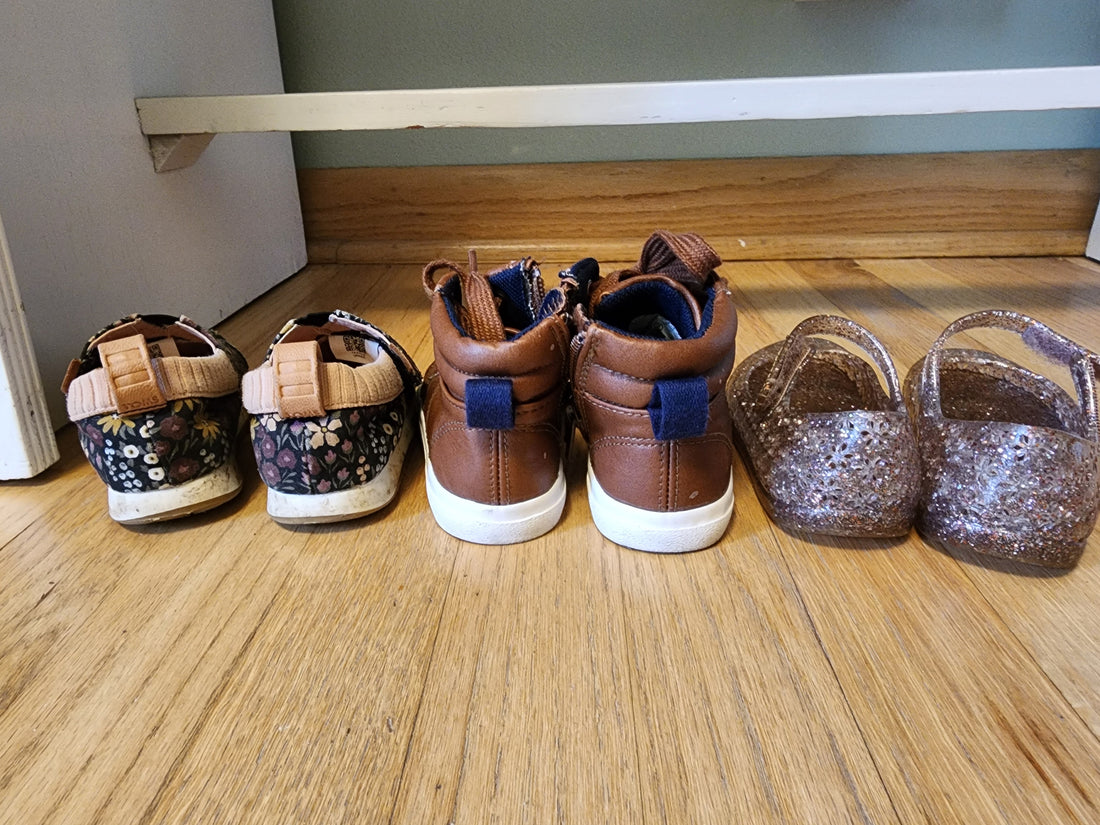
Side-by-Side Start: Introducing Toddler Responsibilities the Easy Way
Share
Toddlers aren’t born knowing how to scrub their faces, tidy their toys, or set the table (weird, but true). Just like we teach them to say “please,” or put their pants on the right way around, responsibility is a learned skill.
As the Montgomery Child Care Association explains it, “Kids don’t just want to be spoiled... they need to feel like their lives are important and make a difference in the world.” Teaching responsibility isn’t just about enforcing rules. It’s about helping toddlers feel capable and connected.
And learning responsibility can start earlier than most parents realize. If you're wondering when or how to begin assigning little jobs to your little person, you're in the right place. This guide is for you: the parent who’s ready to build habits around taking care of myself, my things, and my family, but isn’t quite sure where to start.
Here’s your step-by-step guide to gently and confidently introduce toddler responsibilities, without any lecturing.
1. Start with Side-by-Side
Toddlers learn by doing with you. The best way to introduce responsibility is to model it side-by-side. If you’re brushing your teeth, hand them their toothbrush and brush together. If you're folding laundry, let them “fold” a washcloth. They probably won’t do it well (or at all), but the seeds are being planted.
Use short phrases like “We take care of our things” or “We help each other in this family.” Repetition matters. You're not just doing chores, you’re narrating values.
2. Keep Tasks Micro-Sized
Your toddler’s version of “responsibility” is not going to look like a chore list. It’s going to look like one sock in the hamper. One spoon on the table. One attempt at wiping hands after snack time.
The organization Zero to Three points out the added cognitive benefits of learning responsibility: “Give your child the chance to help around the house. She can wipe down the counter with a towel or sponge, push a broom or mop, rake leaves . . . . These activities give your toddler many chances to solve problems . . . and help your toddler feel helpful, which builds their self-esteem and self-confidence.”
In other words, it’s not about doing things perfectly. It’s about building identity and ability through small, simple, doable acts of responsibility.
3. Assign Tasks in Three Realms: Myself, My Things, My Family
This is the framework we love most, because the "why" is baked into the language. We're teaching children to take care of:
- Myself: brushing teeth, washing hands, putting on socks
- My things: placing books on the shelf, tossing clothes in the hamper, putting toys in baskets
- My family: handing out napkins, feeding the pet, bringing a dirty dish to the sink
When you assign responsibilities across these three areas, you’re reinforcing not just helpfulness, but also identity: I am someone who takes care of myself, my space, and others.
4. Praise the Effort, Not the Perfection
Their shirt is backwards. The toys are 80% in the bin and 20% under the couch. They tried to feed the dog three scoops of food instead of one.
It still counts.
Comment on the behavior, not the outcome: “You really tried to do that all by yourself!” or “I saw how careful you were with that bowl.” This builds confidence and keeps them coming back for more.
5. Make It Routine (and a Little Fun)
Habits stick when they’re part of the rhythm of the day. Try attaching a mini-responsibility to something that already happens regularly: putting PJs in the hamper after getting dressed, placing their plate in the sink after dinner, or putting shoes away when they come in from outdoors.
A responsibility chart can help, but even without one, a predictable rhythm helps toddlers understand what’s expected and when. And if you can add a little fun or a sticker? Even better.
The Long Game Starts Small
Responsibility isn’t a one-time lesson. It’s a lifelong skill that starts with small, consistent moments. When you include your toddler in daily tasks, you’re teaching them they belong, they matter, and they’re capable.
So start small. Celebrate the attempts. And remember: today’s awkward sock-putter-onner is tomorrow’s confident, capable helper.